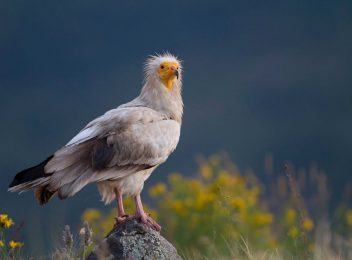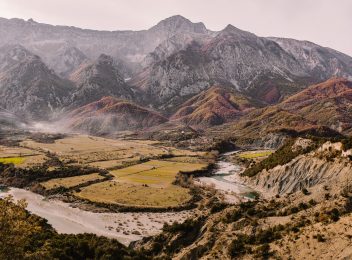The Trojet Foundation, formed from Linda Spahiu’s passion and dedication for the preservation of Albanian ethnographic values, currently represents a rich archive that should be recognised and promoted in order to ensure its longevity into the future. With support from the United States Agency for International Development (USAID) to IntoAlbania, foundations like Trojet will be promoted and marketed through the digital application.
The journey into understanding the existence of the Trojet Foundation (trojet in Albanian means “native lands”) begins with the wooden cradle decoration gracing its entrance. Who are we? Where do we come from, and where are we going? According to Linda Spahiu, the founder of the Trojet Foundation, there was a time when Albanians knew the answers to these questions very well. But today, questions of national identity receive somewhat confusing answers.
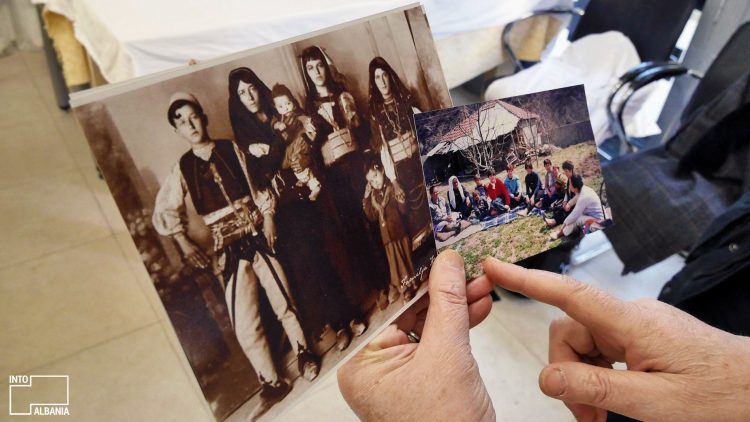
A black-and-white photo of the Keçi family, 1906. On the right, a photo recently taken in a northern village. Photo by IntoAlbania.
Linda has not succumbed to these difficult circumstances nor has it discouraged her. On the contrary, she has devoted the last couple of decades to the preservation of traditional Albanian costumes. These include xhubleta (a traditional kilt), tirqe (traditional woolen pants), guna (a traditional woolen poncho), and other ethnographic elements that, if left to the passage of time and its obliterating effect, could have been lost forever. Fortunately, as a result of Spahiu’s dedication, the Trojet archive now boasts over 2,000 artefacts and traditional costumes, some of which date back to the 18th century.
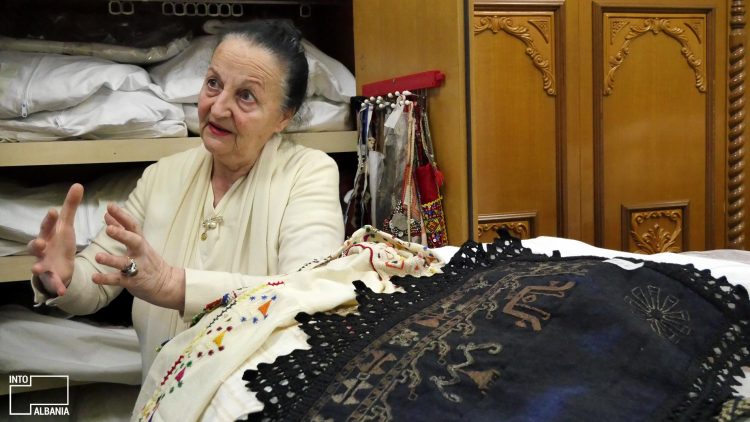
Linda Spahiu, photo by IntoAlbania.
Linda upholds an unwavering delicate care and passion for the infantile stages of every item created, a careful touch that even extends to her preservation of Albanian heritage and society. Linda is eager to talk at length about the costumes that constitute her foundation. Her knowledge takes us on a journey through time, through towns and villages, through Albania’s unique ethnography.
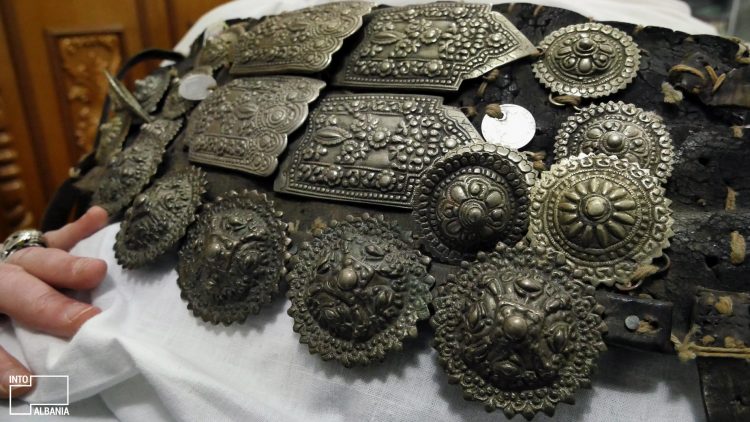
A traditional belt, part of the archive. Photo by IntoAlbania.
We take a closer look at a select few items belonging to the Trojet Foundation. The first one that really catches our eye is a 250-year-old white xhubleta (kilt) from Dukagjin, it is extremely rare and difficult to find, embellished with symbols that are near impossible to decode and decipher. The other xhubleta is also embroidered with colourful and enigmatic totems, the understanding of which requires a more in-depth study.
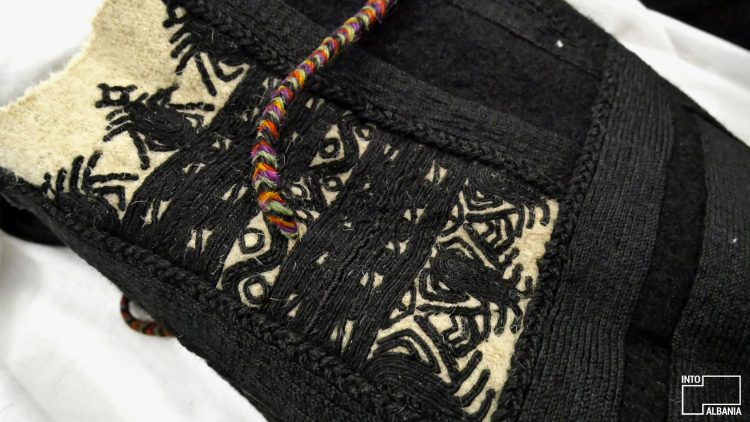
The white xhubleta, 250 years old, Dukagjin. Photo by IntoAlbania.
We see a saddlebag, embroidered with cosmic bird symbols adjacent to another symbol, the egg of life. Amongst this mix we find an eagle, and one might think that it represents the national symbol of the double headed eagle which dons the flag. It’s a misled assumption, as this particular symbol goes further back in history, and even predates this national emblem.
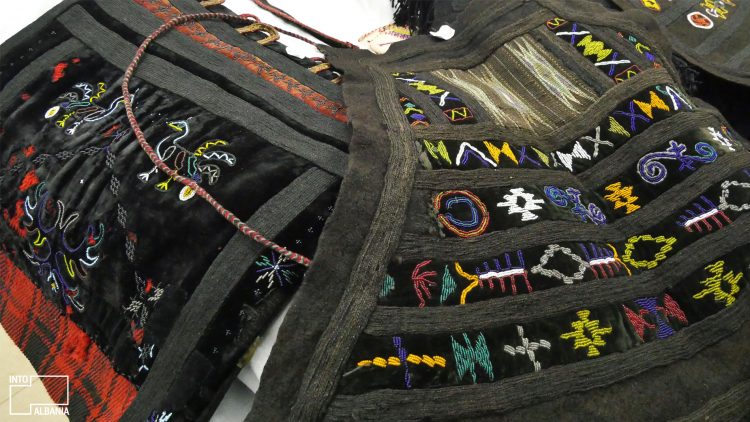
The saddlebag with cosmic symbols and other parts of the xhubleta (kilt) of Malësia e Madhe (Great Highlands), eve of the ‘900s). Photo by IntoAlbania.
The saddlebag is only one of 16 elements that make up the xhubleta . According to scholar Jaho Brahaj, the xhubleta dates back to the year 2000 B.C. It represents an entire universe of pagan symbols inherited from Creto-Mycenaean culture.
For good reason, Linda encourages us to think outside of the box and not merely consider this clothing’s aesthetic value. Countless messages can be found in the embroidery, which tell tales of an entire group’s identity, the nature of their community, as well as the individual history of the community members.
To decode these messages that were embroidered thousands of years ago, a challenge arises that would require multiple scholars and vast amounts of research. These decorative images tell a complex story. They illustrate the collision of opposing ideas, the intricate interweaving of gold and silver, the use of a myriad of unexpected colour combinations, and countless other cyphers inherited from one generation to the next. Over time, their specific meanings unfortunately fade in the process of time and the loss of their origin stories.
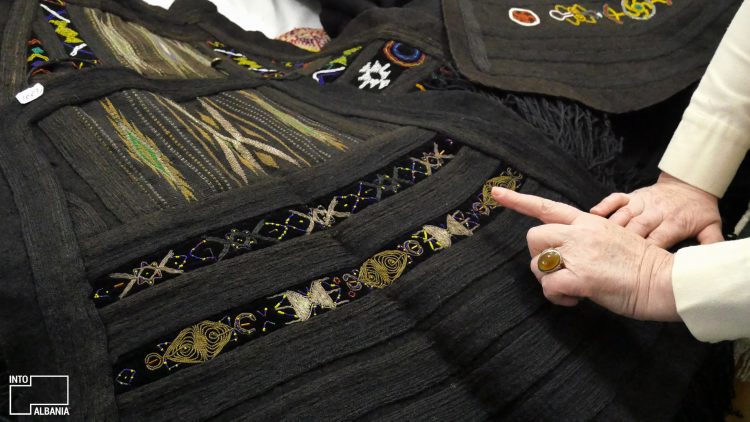
Xhubleta (kilt) from Malësia e Madhe, eve of the ‘900s. Photo by IntoAlbania.
We encounter more impressive works this time deriving from the region of Has. Aprons that women would have donned in times of mourning, button-down shirts adorned with multihued asymmetrical figures, which could easily have been created by the surrealist artist Joan Miró himself, leave us utterly speechless. Words escape us when confronted with this level of creativity and complex pictorial language. They are perplexing as we are unable to understand their exact meaning.
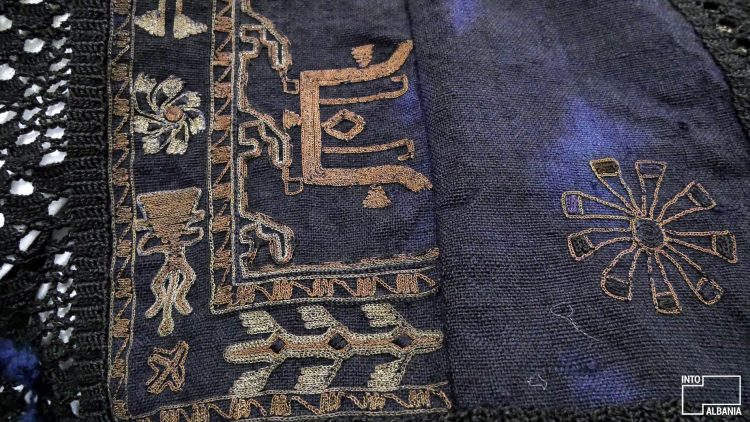
Apron from Has, second half of the 19th century. Photo by IntoAlbania.
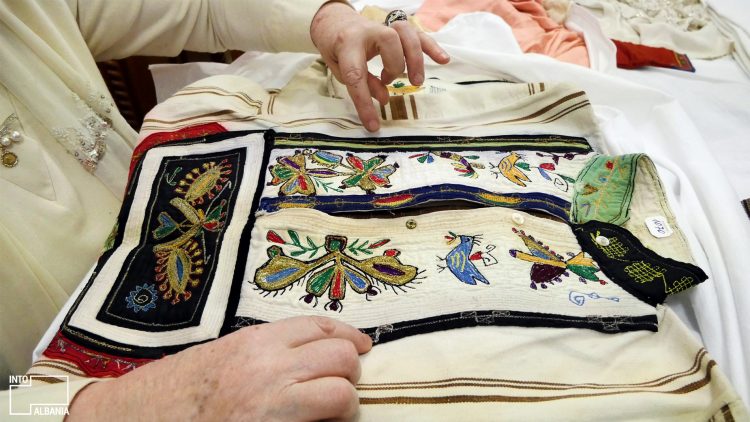
Button-down shirt from Has, 1930’s. Photo by IntoAlbania.
As undecodable as these symbols are nowadays, the original function of these traditional clothes and the emblems upon them, was in fact to communicate very clear messages. Indeed, for women, this traditional kind of attire was a self-explanatory message for all who gazed upon it, outlining the wearer’s societal and civil status, their age and lifestyle.
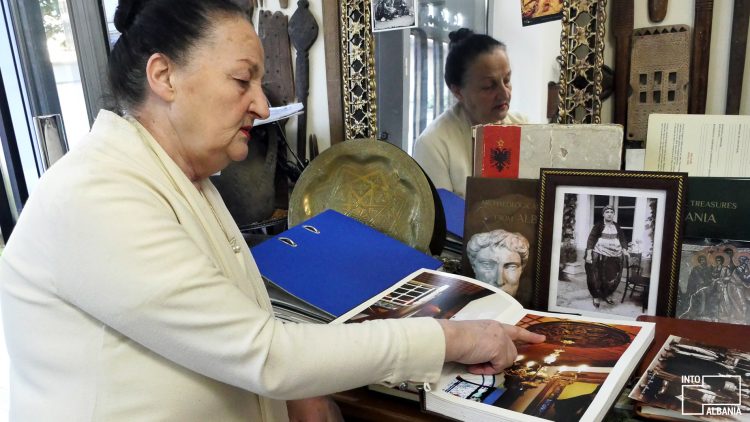
The journey around Linda’s premises is lengthy and full of surprises, one where clothes and objects map a history of Albania, culturally and geographically. We stop in front of some woodworks from villages in the vicinity. What we find carved into these wooden objects is surprisingly multi-layered. Many of them contain abstract references to female sexuality and similar totems. Perhaps this is the unarticulated conscience of the woodcarvers.
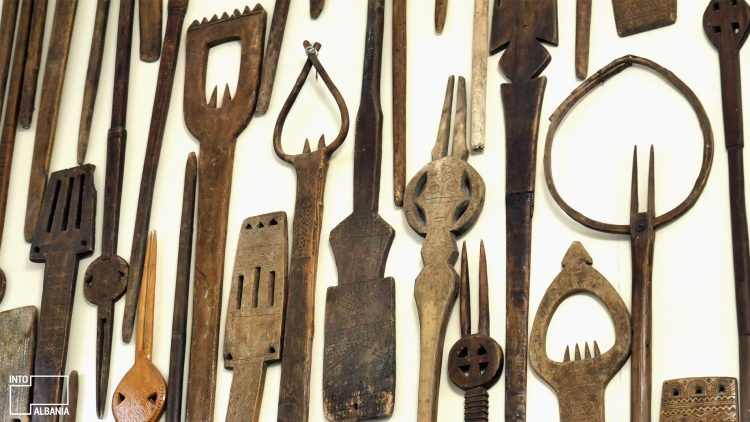
Woodworks at “Trojet”, photo by IntoAlbania.
The simplicity yet fascinating hidden meaning behind these symbols has inspired Linda to use them as the logos for her foundation. Indeed, the foundation’s logo resembles a tribal-like image which has survived through centuries, therefore imbued with all facets of Albanian society’s developmental phases.
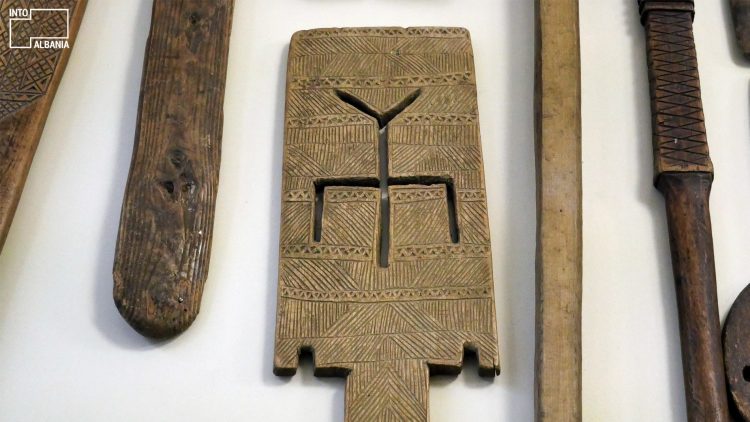
The logo of “Trojet” Foundation.
In light of all this wealth, a wealth that belongs not only to Albania but to a global human heritage, Linda’s goal is simple: she wishes to offer the 2000-piece collection to a museum. A collection made up of artefacts and traditional costumes gathered over the years. There are even objects that are yet to be added to the archive! Her dream is to see the creation of a museum in which the traditional costumes and other historically valuable objects will be preserved in the right conditions. Another wish is that a research lab will be set up, specifically focused on training new generations of Albanian ethnographers and archaeologists.
Above all, this museum should inspire the public to learn more about its ethnographic heritage and consequently, its identity. Linda is convinced that without a thorough knowledge of the past, there cannot be a clear sense of identity and as a result, a healthy development of society in the future.












